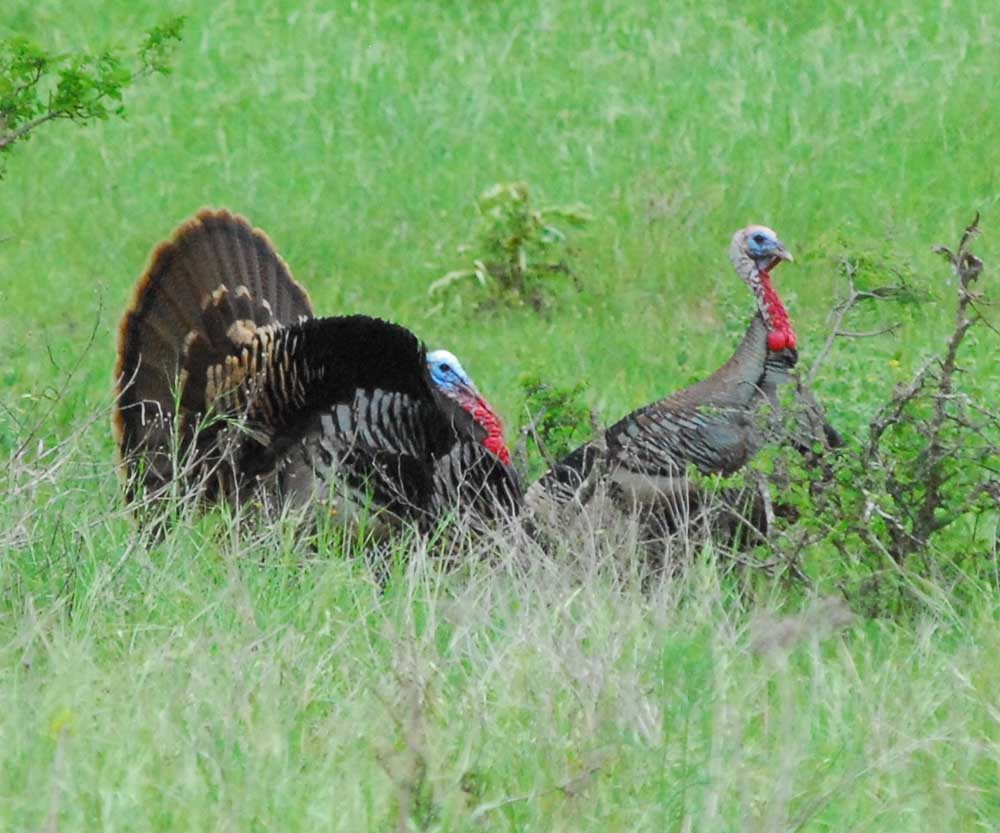Plenty of mature gobblers for spring turkey season
Published 12:50 am Friday, March 23, 2018

- Mature Rio Grande gobblers become showy and talkative during the spring breeding season. That is when hunters are able to call them in for a shot.
If I had to guess I would say I was batting about .500 when it comes to spring turkey hunting.
I started hunting spring gobblers in the 1970s and quickly learned that a battle of wits with a bird that has a brain about the size of a grape is not as easy as it sounds. On the other hand, when everything comes together it might be the most satisfying success a hunter can have in Texas.
Trending
The thing that makes turkey hunting so challenging is that there are so many elements working against the hunter. It takes getting all the stars aligned just right, or in some cases just dumb luck, to make it work.
The season is set around the peak of the breeding activity for the birds. That is typically early in the spring for South Texas and progressively later going north into the Panhandle as the birds seek the right amount of daylight and temperatures to successfully nest.
Hunters will have their best chance of calling in a bird during a time between when the bulk of the hens are sitting on nest and before the gobblers totally lose interest. Finding that window of opportunity is not an exact science, however, because from one year to the next the spring green-up of the grasses that help trigger nesting activity can come earlier or later depending on rainfall and how long winter hangs on. In the case of dry years it may not come at all.
Calling turkeys is counter to what happens in the wild. Using mouth calls, box calls or other variations, hunters simulate a hen and attempt to cause an overexcited tom to come to them. In the wild gobblers rule the roost and it is the hens that travel to them and stay with them until bred or kidnapped by a more dominant bird.
On any hunt there can be other factors like rain or wind that make it difficult for a turkey to hear a call or for a hunter to hear a turkey, late-season snow, or even a coyote that makes an appearance when the birds fly down from roost to strut at first light. All these factors, and more, can turn a hunt into a failure.
But when you call one in from across a field to within shotgun range, 25 yards or maybe even 10 yards, the feeling of satisfaction is nearly unrivaled.
Trending
Jason Hardin, the Texas Parks and Wildlife Department’s Upland Game Bird Program biologist, said timing-wise this season is setting up just right in much of the state.
“Things are changing daily as gobblers are strutting and hens are slowly becoming receptive,” Hardin said. “That means many hens could become interested in breeding near opening day of the season, effectively hampering a hunter’s chances of luring love-struck gobblers. If you do go early in the season some of the best hunting could be midday after hens split off from toms.
“By week three most hens should be bred and hunting should be good from the time the toms leave the roost until they go back up for the night. Also, if conditions remain mild and if we get a few more timely rain events, Texas can expect another good year of nesting and population growth.”
Hardin said he has not seen a lot of 1-year-old jakes this winter, a sign of a bad hatch last year. He has seen an abundance of mature gobblers, 2 and 3 years old, the trophy birds because of their wiliness.
He added that most of the state has gotten late winter rains and that range conditions are setting up nicely for nesting. There is one glaring exception.
“The Rolling Plains is extremely dry and desperately in need of rain soon if there is going to be any production/recruitment this year. It could make for tough hunting as well. Lots of unbred hens could make it tough on hunters,” Hardin said.
When it comes to table fare, wild turkeys sometimes get a bad rap. They are not Butterballs and shouldn’t be treated the same way when cooking. Wild turkeys spend all day every day walking around looking for food and water. That means there is not a lot of fat on the birds and their legs are muscled up like an NFL running back.
That brings back the sage advice of an elderly West Texas ranching lady who suggested years ago that when cooking a wild turkey it is best to fry the breast and feed the coyotes the rest.
Slicing the breast in half, then cubing the meat and lightly dusting it with flour is certainly a can’t-miss option when coupled with cream gravy.
The spring season in South Texas opened March 17 and runs through April 29. The North Zone is March 31 through May 13. There is a special one-gobbler season April 1-30 in Bastrop, Caldwell, Colorado, Fayette, Jackson, Lavaca, Lee, Matagorda, Milam and Wharton counties.
An eastern turkey season is open in 15 counties April 15-May 14. Hunters in those counties must report their kill within 24 hours and can do so on the Texas Hunt Harvest App or online at www.tpwd.texas.gov/turkey. The app is free to download from either Google Play or the App Store.
Hunters hunting Rio Grande turkeys are asked to voluntarily report their kill to provide the department with harvest data.






